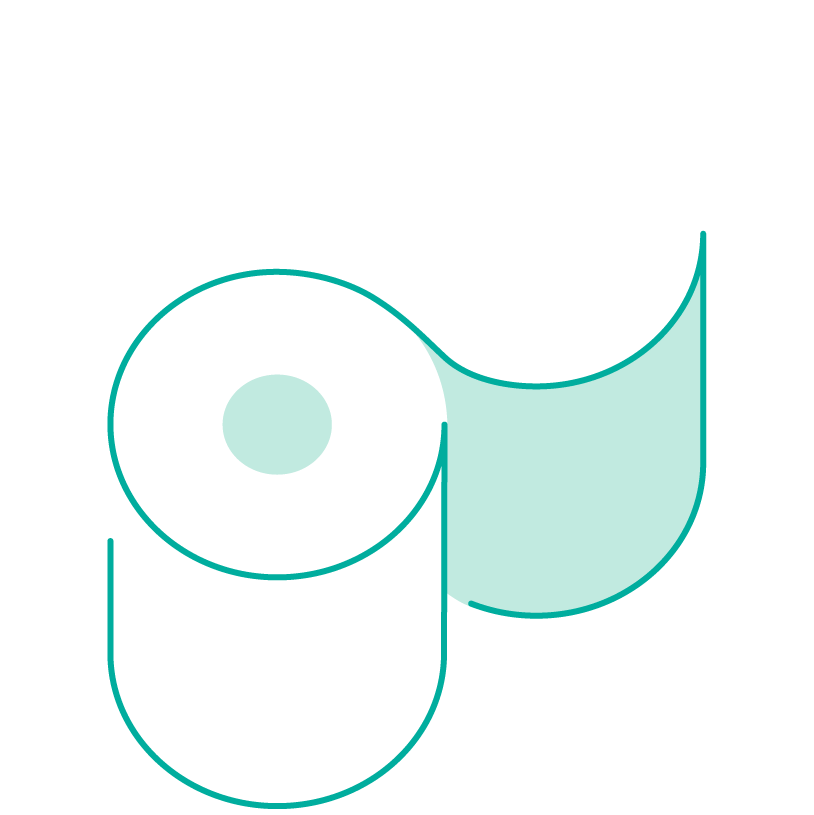
Everyday Objects
Toilet Paper
Take a moment to imagine a world without toilet paper…
Dark times indeed. But toilet paper hasn’t been around for long at all. In fact, up until just over 100 years ago, human beings used all kinds of wonderful things to clean up after their business.
The Ancient Greeks had the cheek-clenching habit of wiping themselves with shards of clay and pottery. Sometimes, they’d even write the names of their enemies on the pottery before use – how lovely! The Ancient Romans spent less of their toilet time soiling the names of their enemies, and more cleaning up with a sponge on a stick, called a ‘xylospongium’. Fun fact: unless you were super rich, you wouldn’t have your own xylospongium. Instead, you’d use a communal one at the local public toilet – where you would do your business alongside up to 20 other people, with no stalls to prevent eye contact. Don’t worry about your sponge on a stick, though – you’d just rinse it in water, vinegar and salt, and leave it for the next would-be pooper.
The weirdness of the ways we dealt with going number one and two don’t stop there. A popular member of the English court, especially during Tudor times, was ‘The Groom of the Stool’, a man appointed to provide the king with water, towels, and anything else he might need in assisting his movements. Bet you’ll never complain about your job again! Believe it or not, The Groom of the Stool was a well-respected – and even feared – position. Because he’d spend his time chilling with the king during toilet time he’d often hear the king’s most intimate thoughts. I don’t often talk to people during a number two, but I imagine the information you’d give must be of the highly sensitive variety, for people to be scared of the Man in Charge of the King’s Bottom.
Paper was invented in China, where it was first used as toilet paper around 1,500 years ago. Over here in Europe, we wrote our books on parchment made from animal skin, and paper was a luxury no one would waste on their bum. But then along came Johannes Gutenberg in 1440, inventing the printing press and inspiring the Printing Revolution. Suddenly, we could print a vast amount of information in a small amount of time – and paper was way better than parchment for that. Yet we can’t credit good old Gutenberg for the soft tissue we know and love today; that honour goes to Joseph Gayetty, who first sold toilet paper in 1857 and marketed it as a medical product that would prevent hemorrhoids. I mean, I’m sure it was a step from pottery or wood!
Gayetty’s patent of toilet paper ended up wrapped in a nasty legal dispute with toilet paper dealers Clarence and Edward Scott. The result of this was toilet paper becoming more normal – it was sold in pharmacies, and seen as something healthy and hygienic, rather than something gross and taboo. Indoor plumbing began in 1829 with a hotel in Boston boasting an indoor toilet, and the increasing popularity of this through the nineteenth century created a demand for soft toilet tissue, because newspaper scraps would gum up the pipes. By 1902, the Scott company started to produce its own toilet paper, and soon became the world’s biggest manufacturer of the stuff. Given that your other option was thin bits of newspaper, no wonder people were desperate for the soft caress of toilet paper.
And there we have it! Even though it took until 1970 for adverts to be allowed to mention ‘toilet paper’ (instead calling it ‘bathroom tissue’), today toilet paper is an industry worth billions of pounds. So be thankful the next time you’re wiping with toilet tissue – thankful that you’re not using a bit of old ceramic instead.
Words by Quinn Clark
Research by Stephanie Crowe
Illustration by Noni Farragher-Hanks